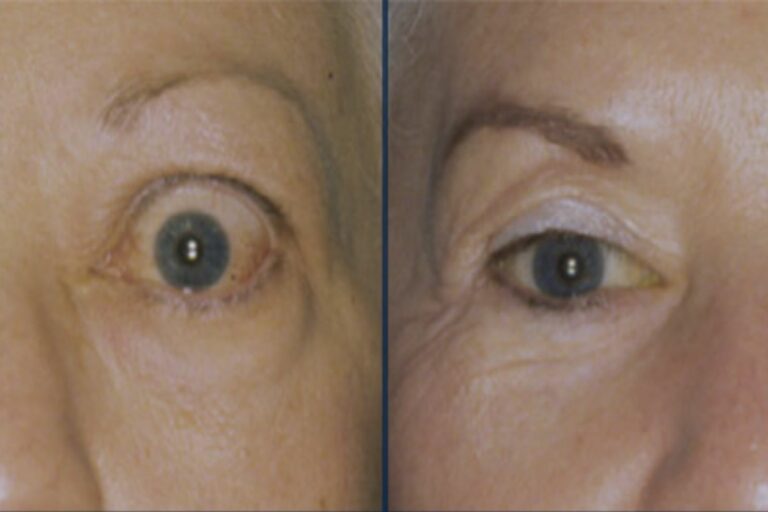Nearly one out of every 200 people suffer from Graves’ Disease. And nearly half the time, this disease is accompanied by a condition known as Graves’ Ophthalmopathy, or Thyroid Eye Disease (TED). While symptoms are often mild, this condition can lead to severe vision loss. That’s why diagnosis is crucial to soothe eyes and preserve sight. The Oculoplastics team at Florida Eye Specialists offers many treatment options to help patients with Graves’ Ophthalmopathy. Read on to better understand TED and treatment options.
Graves’ Disease and Thyroid Eye Disease Causes
Graves’ Disease is an autoimmune disorder that results in the overproduction of the body’s thyroid hormones. The body’s immune system may attack the thyroid gland, the skin of the shin, and the tissue behind the eye. While Graves’ Disease can affect anyone, it is most common in women and people under the age of 40. The main cause of the disease is unknown, but it often runs in families.
Up to 50 percent of patients suffering from Graves’ Disease show signs of Graves’ Ophthalmopathy, also known as Thyroid Eye Disease (TED). TED is caused by the same condition that attacked the thyroid gland.
Graves’ Ophthalmopathy Symptoms
For those suffering from Graves’ Ophthalmopathy, inflammation and other immune system issues affect the muscles and tissues around the eyes. Signs and symptoms may include bulging eyes, a gritty sensation in the eyes, pressure or pain in the eyes, and reddened or inflamed eyes. Graves’ Ophthalmopathy patients often experience light sensitivity, double vision, and vision loss as well.
Treatment for Thyroid Eye Disease at Florida Eye Specialists
Graves’ Ophthalmopathy needs to be diagnosed and treated as early as possible to prevent severe vision loss. Early treatment of TED is critical to prevent the condition from progressing. Six percent of patients suffering from Graves’ Ophthalmopathy lose their vision completely due to damage to the optic nerve.
While there is no “cure” for TED, there are many treatment options available. Surgical correction may include orbital decompression, strabismus surgery, and eyelid retraction repair. Some patients require all three procedures, while others may just need one. In recent years, the first drug treatment therapy, Tepezza, has been approved for the treatment of TED. Tepezza is a medical therapy that prevents the circulating antibodies in Graves’ Disease from attaching to the eye socket tissue.
Dr. Kostick, M.D., F.A.C.S., is a board-certified ophthalmologist and fellow of the American College of Surgeons where he trained in Oculoplastic, Orbital, and Lacrimal Surgery. Dr. Kostick performs surgery of the eyelids, eye socket, and lacrimal system including cosmetic and reconstructive procedures. Schedule a consultation today with Dr. Kostick to discuss Tepezza and other Graves’ Ophthalmopathy treatment options.
About Florida Eye Specialists
Florida Eye Specialists is one of the largest multi-specialty ophthalmology private practices in Northeast Florida. We have offices in Fernandina Beach, Gate Parkway/295, Mandarin, Northside, Ponte Vedra Beach, Riverside, San Marco, Southpoint, and St. Augustine.
Florida Eye Specialists is a comprehensive eye care practice that features a complete spectrum of ophthalmology services. Our surgical services include cataract surgery, LASIK eye surgery, corneal procedures, glaucoma treatment options, oculoplastic eyelid surgery, dry eye treatment, and even cosmetic and skin care services. Schedule an appointment at one of our nine locations.

